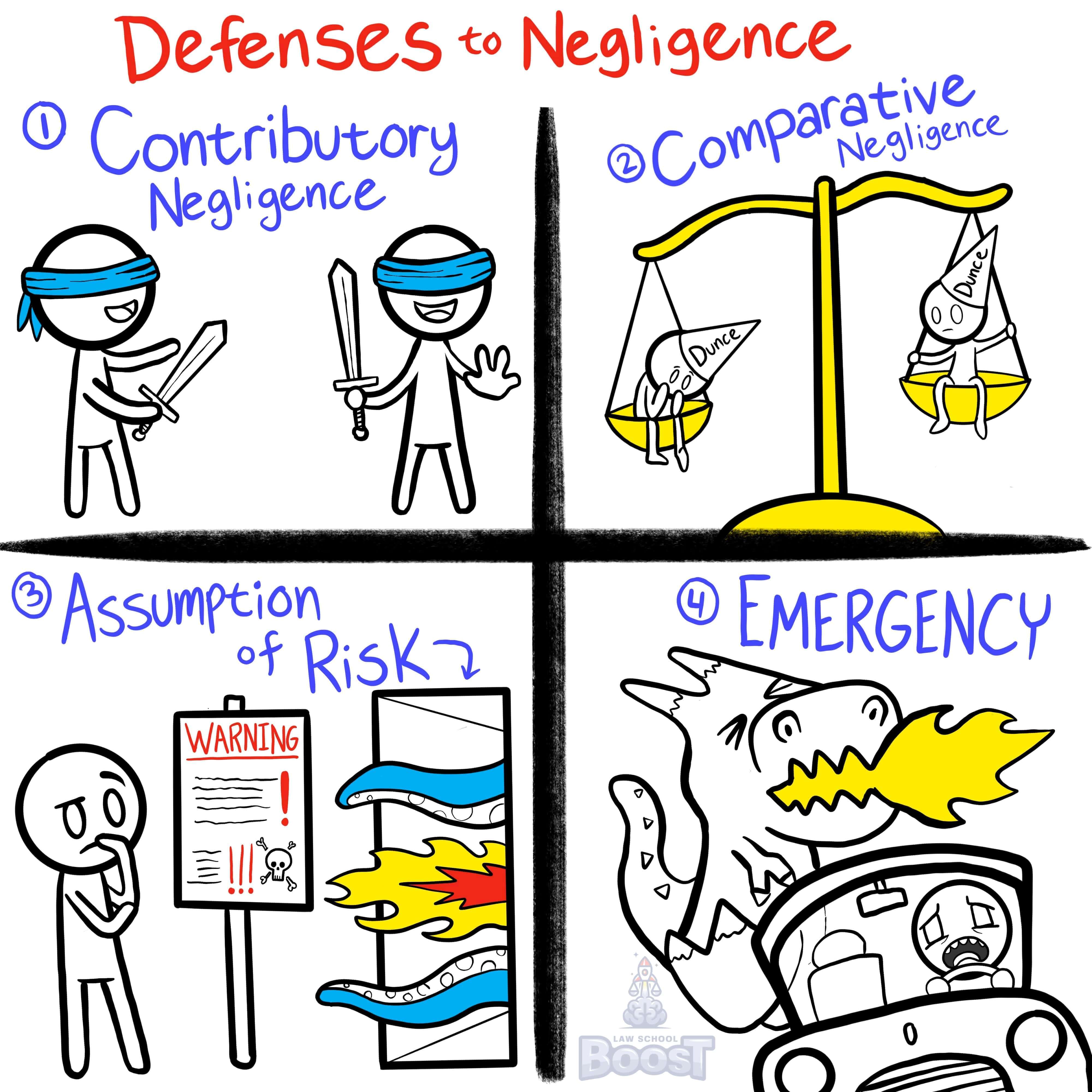👀
Torts • Defenses to Negligence
TORT#057
Legal Definition
Comparative negligence is a defense, in some jurisdictions, where the trier of facts weighs the plaintiff's negligence against the defendant's negligence and reduces damages accordingly. There are two types of comparative negligence:
1. Pure Comparative Negligence - Plaintiff's recovery is reduced by the percentage attributable to their own fault.
2. Partial Comparative Negligence - Plaintiff's recovery is completely barred if their fault exceeds 50%.
1. Pure Comparative Negligence - Plaintiff's recovery is reduced by the percentage attributable to their own fault.
2. Partial Comparative Negligence - Plaintiff's recovery is completely barred if their fault exceeds 50%.
Plain English Explanation
The defense of comparative negligence allows a defendant to reduce his total liability by the amount of negligence shared by the plaintiff. Imagine that Bob and Sam are both driving their cars. Bob was negligently texting on his cell phone, and Sam was negligently speeding. Bob and Sam get into a car accident, and Bob sues Sam for $100,000. In court, after the jury hears all the evidence, they find that Bob was 51% responsible for the accident due to his negligence, and Sam was 49% responsible. What happens now?
In a jurisdiction that follows pure comparative negligence, Bob's recovery will be reduced by the amount that he was at fault, 51%. This means, at most, he will be awarded $49,000 ($100,000 - (51% of $100,000)).
However, in a jurisdiction that follows partial comparative negligence, Bob is not allowed to recovery anything because he was more than 50% at fault for the accident.
In a jurisdiction that follows pure comparative negligence, Bob's recovery will be reduced by the amount that he was at fault, 51%. This means, at most, he will be awarded $49,000 ($100,000 - (51% of $100,000)).
However, in a jurisdiction that follows partial comparative negligence, Bob is not allowed to recovery anything because he was more than 50% at fault for the accident.
Visual Aids

Related Concepts
In assessing negligence, what is assumption of risk?
In assessing negligence, what is contributory negligence?
In assessing negligence, what is emergency?
In assessing negligence, what is the last clear chance rule?
What are the defenses to negligence?
When is contributory negligence of a third party imputed to a plaintiff?


